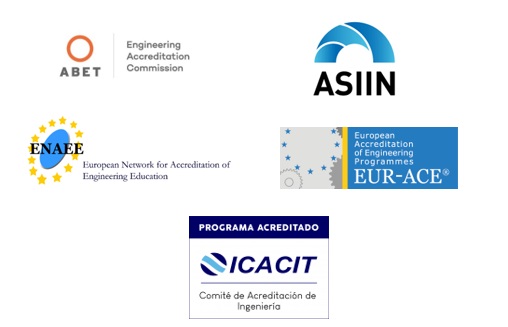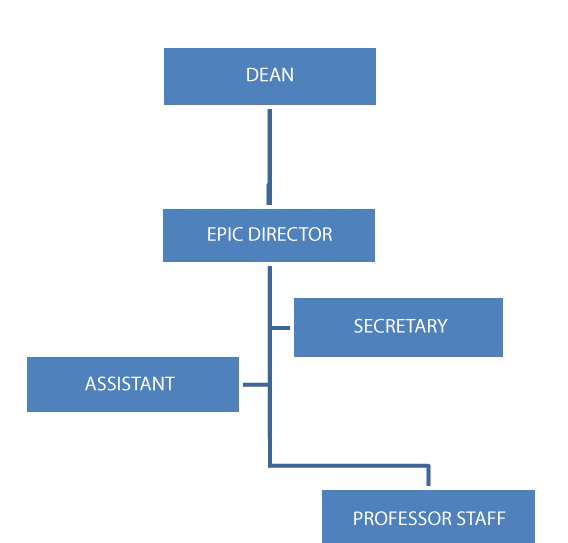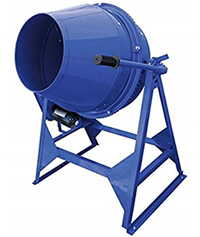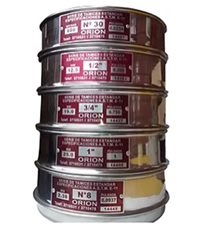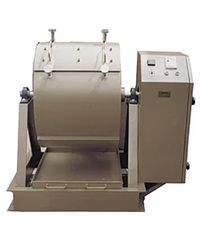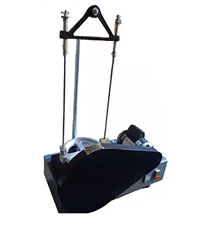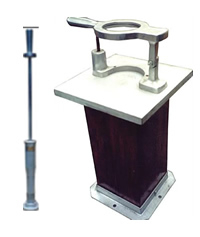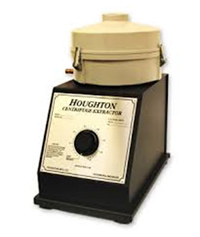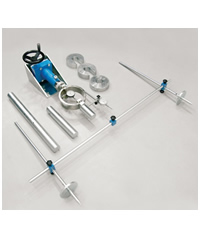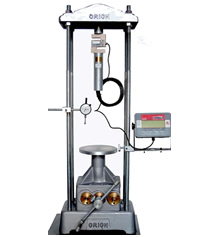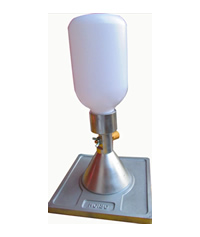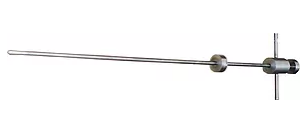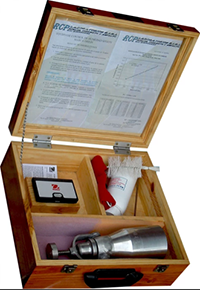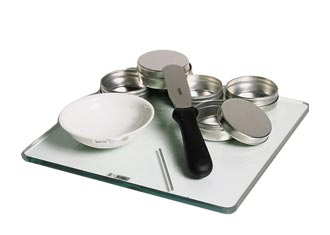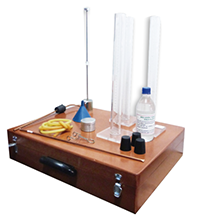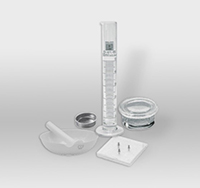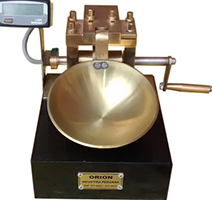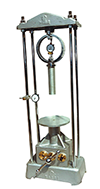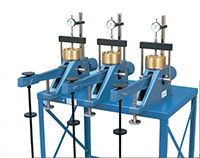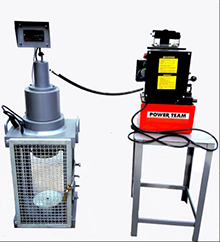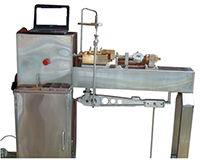CIVIL
Director of the Civil Engineering Program / Mag. Felipe Edgardo García Bedoya
Dear members of the university community of the College of Engineering and Architecture (FIA) of the University of San Martin de Porres, on behalf of the Civil Engineering Program, I would like to welcome you to our website and through it, to be informed of the activities that we develop in the FIA.Dear members of the university community of the Faculty of Engineering and Architecture (FIA) of the Universidad de San Martín de Porres, on behalf of the Civil Engineering Program, I would like to cordially welcome you to our website and through it, to be informed of the activities that we develop in our alma mater.
The Civil Engineering Program has more than 30 years of operation and countless graduates who are in the labor market working within the country as well as in the international environment, with great success, giving prestige to our institution.
Civil Engineering is the branch of engineering oriented towards the design and construction of infrastructure in buildings, road works, hydraulic works, etc. The Civil Engineer, graduated from the Civil Engineering Program of the Universidad de San Martín de Porres, is a professional who possesses a harmonious set of skills, attitudes and values, which qualifies him to develop solutions for all kinds of works and infrastructure studies, technically and economically feasible and sustainable, socially and environmentally compatible.
MISSION
To train Civil Engineers in an integral way, with solid scientific, technological and humanistic training, who lead the profession to be able to perform the design, construction, supervision, consulting and management of projects and works, with skills for research and business formation, with ethics, social responsibility, respect for culture, the environment and sustainable development.
VISION
We will be the best Civil Engineering Program in Peru, dedicated to the integral formation of its professionals, with research skills, with technical capacity for planning, design, construction and management of infrastructure and civil works in general, as well as their maintenance and rehabilitation.
Program Educational Objectives (PEOs)
Graduates:
OE1: Design and execute comprehensive civil engineering projects.
OE2: Research and develop their creative and entrepreneurial skills in the fields of civil engineering with critical thinking.
OE3: Lead multidisciplinary teams, communicate rigorously.
OE4: Participate in sustainable project proposals with professional ethics and social commitment.
OE5: Consolidate their development and professional performance by staying up-to-date in the field of Civil Engineering.
The Civil engineering program is accredited by:
Student outcomes (SO)
RE1: An ability to identify, formulate, and solve complex engineering problems by applying principles of engineering, science, and mathematics.
RE2: An ability to apply engineering design to produce solutions that meet specified needs with consideration of public health, safety, and welfare, as well as global, cultural, social, environmental, and economic factors.
RE3: An ability to communicate effectively with a range of audiences.
RE4: An ability to recognize ethical and professional responsibilities in engineering situations and make informed judgments, which must consider the impact of engineering solutions in global, economic, environmental, and societal contexts.
RE5: An ability to function effectively on a team whose members together provide leadership, create a collaborative and inclusive environment, establish goals, plan tasks, and meet objectives.
RE6: An ability to develop and conduct appropriate experimentation, analyze and interpret data, and use engineering judgment to draw conclusions.
RE7: An ability to acquire and apply new knowledge as needed, using appropriate learning strategies.
ORGANIZATIONAL CHART
Academic Degree and Professional Title awarded:
Degree: Bachelor in Civil Engineering
Title: Civil Engineer.
Duration: 10 semesters
Type of teaching: face to face
Study regime: Semester
Language: Spanish
The Civil Engineering degree at USMP allows you to be a professional responsible for the planning, design and construction of all the civil works that the country needs, in a sustained and sustainable manner. A country that progresses is a society that seeks the well-being of its citizens and has the need to design and build homes, schools, buildings, hospitals, roads, bridges, airports, ports, hydroelectric plants, irrigation systems, etc.
Professional Profile
The Civil Engineer is a professional who possesses a harmonious set of knowledge of Basic Sciences and Engineering Sciences, which enables him/her to develop technically feasible, economically sustainable, socially and environmentally compatible infrastructure solutions.
To ensure that the solution contemplates the most appropriate technology, he/she has solid knowledge in Structural and Geotechnical Engineering; Hydraulic, Sanitary and Water Resources Engineering; Transportation Engineering; Materials, Methods and Construction Planning; Environmental Engineering; Economics and Administration.
Applicant’s Profile
The Admission Process is an academic-administrative act organized and executed by the USMP Admissions Office with the purpose of evaluating and selecting from among the applicants those who, upon admission, possess the qualities and competencies that are necessary for a suitable performance in university studies, which are mentioned in the following Applicant Profile:
- Effective communication in Spanish language, in oral and written form. Basic communication in English.
- Knowledge of mathematics: Relational numbers and functions; geometry and measurements.
- Basic knowledge of Peruvian history and its interrelation with the political, economic and social processes of the American continent and the world.
- Ability to explain the relationships between their personal development and their social, family and geographical environment; and act according to the requirements of the same, through teamwork, the exercise of solidarity, mutual respect, social responsibility and environmental protection.
- Practice of a healthy life, through physical activity and sports, personal hygiene and maintaining a healthy body and high performance of their intellectual abilities.
- Vocation for the professional career that the student has chosen.
Graduate Profile
Generic Cognitive Competencies
- Applies analysis and synthesis, induction and deduction, and systemic approach, among others, as general strategies for knowledge acquisition.
- Uses critical thinking when analyzing different contexts, sources of information and facts of reality.
- Conducts research, related to his/her profession, under the guidance of a more experienced professional.
- Adequately applies meta-cognitive strategies, which qualifies him/her for lifelong autonomous learning (Learning to learn).
Instrumental Generic Competencies
- Effectively plans and organizes his/her activities and the time dedicated to them.
- Communicates assertively in Spanish.
- Communicates basic ideas of daily life and his/her profession in English (intermediate English).
- Effectively uses new information and communication technologies.
- Solves in a creative way the professional and personal problems he/she faces.
- Leads and actively participates in work teams, commits to their tasks and achievements.
- Develops and manages projects of various kinds, related to their profession.
Specific or technical competencies
- Engineering Knowledge: Applies knowledge of mathematics, science and engineering in the solution of complex engineering problems.
- Problem Analysis: Identifies, formulates, searches for information and analyzes complex engineering problems to reach informed conclusions using basic principles of mathematics, natural sciences and engineering sciences.
- Solution Design and Development: Designs solutions to complex engineering problems and designs systems, components, or processes to meet desired needs within realistic constraints in public health and safety, cultural, social, economic, and environmental aspects.
- Research: Conducts studies of complex engineering problems using research-based knowledge and research methods including designing and conducting experiments, analyzing and interpreting information, and synthesizing information to produce valid conclusions.
- Use of Modern Tools: Creates, selects, and uses modern engineering and information technology techniques, skills, resources, and tools, including prediction and modeling, with an understanding of their limitations.
- Engineering and Society: Applies informed reasoning through contextual knowledge to evaluate social, health, safety, legal and cultural issues and consequent responsibilities relevant to professional engineering practice.
- Environment and Sustainability: Understands and evaluates the impact of solutions to complex engineering problems in a global, economic, environmental and social context.
- Ethics: Applies ethical principles and commits to professional ethics and the responsibilities and standards of engineering practice.
- Individual and Teamwork: Performs effectively as an individual, as a member or leader of diverse teams.
- Communication: Communicates effectively, by understanding and writing reports and design documentation, making presentations, and conveying and receiving clear instructions.
- Project Management: Demonstrates knowledge and understanding of engineering management principles and economic decision making, and their respective application.
- Lifelong Learning: Recognizes the need for lifelong learning and addresses it in the broader context of technological change.
CAPSTONE PROJECTS PRESENTATION BY THE STUDENTS OF THE PROFESSIONAL SCHOOL OF CIVIL ENGINEERING (USMP) TO THE DIRECTOR OF THE CIVIL ENGINEERING SCHOOL OF THE ANDRÉS BELLO UNIVERSITY IN
CONCEPCIÓN – CHILE (UNAB)
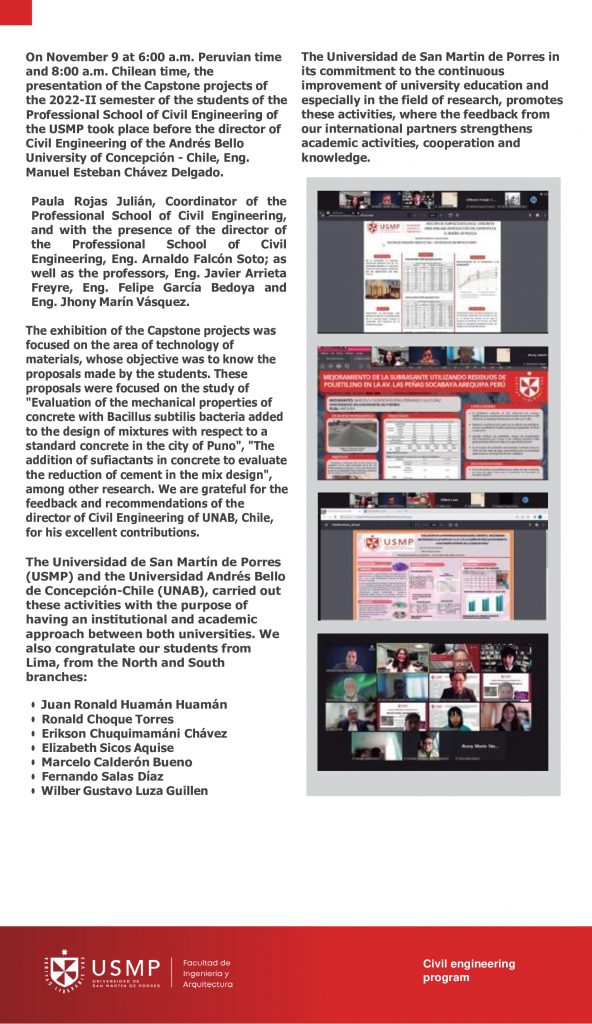
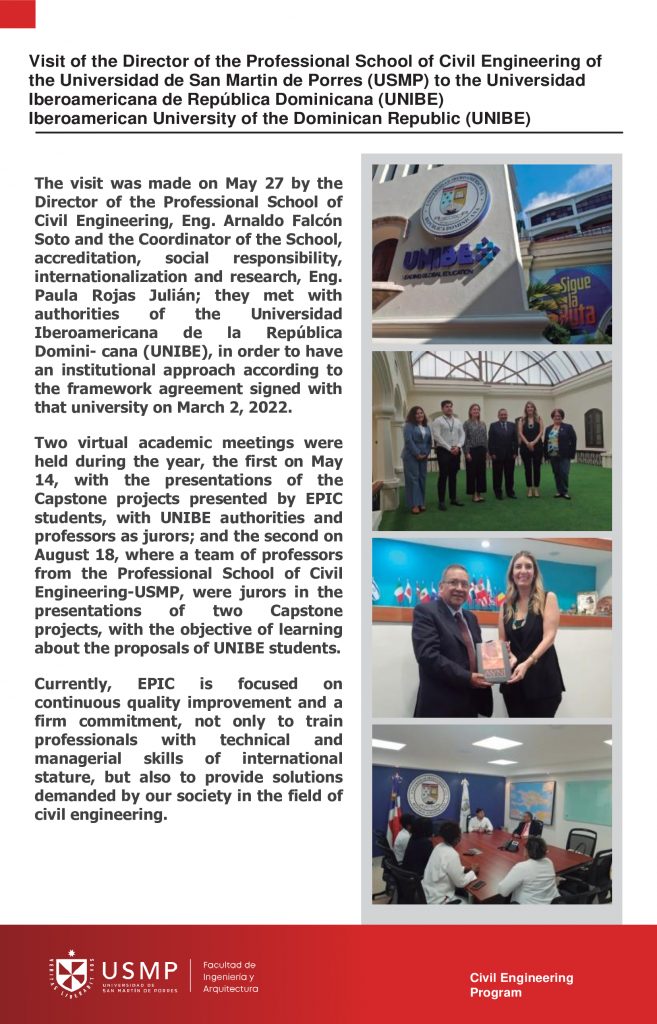
Occupational Field
The occupational field of the civil engineer is very broad because this profession is concerned with the general welfare of people: it builds responsibly, solves social and infrastructure problems, integrating remote villages. A very succinct compilation establishes that the occupational scope of the civil engineer is as follows:
- In the area of construction: housing, multi-family buildings, housing complexes, hospitals, schools, shopping centers, industrial premises, tourist and recreational centers, sanitation, electrification and urban habilitation works.
- In the area of transportation and road works: highways, bridges, tunnels, ports, airports, topographical and cadastral surveys; geological and soil studies.
- In the area of structures: structural design of buildings in general, buildings, bridges, dams, reservoirs, irrigation, sewage works, etc.
- Hydraulics.
- Management and Consulting.
Civil Engineering Final Project List
Civil Engineering Final Project II
- Civil Engineering Final Project II / 2021-II
- Civil Engineering Final Project / 2021-I
- Civil Engineering Final Project II / 2020-II
- Civil Engineering Final Project II / 2019-I
- Civil Engineering Final Project II / 2018-II
- Civil Engineering Final Project II/ 2018-I
- Civil EngineeringI Final Project II / 2017-II
Civil Engineering I Final Project
- Civil Engineering I Final Project I / 2021-I
- Civil Engineering I Final Project I / 2020-II
- Civil Engineering I Final Project I / 2020-I
- Civil Engineering I Final Project I / 2019-I
- Civil Engineering I Final Project I / 2018-II
- Civil Engineering I Final Project I / 2018-I
- Civil Engineering I Final Project I / 2017-I
Statistics
Students Admitted
| Program | Year | Semester | Matriculated | No Matriculated | Total Beginners |
|---|---|---|---|---|---|
| Civil Engineering | 2023 | ||||
| I | 28 | 30 | 58 | ||
| 2022 | I | 6 | 4 | 10 | |
| II | 36 | 22 | 58 | ||
| 2021 | I | 41 | 19 | 60 | |
| II | 16 | 6 | 22 | ||
| 2020 | I | 46 | 34 | 80 | |
| II | 17 | 3 | 20 | ||
| 2019 | I | 59 | 21 | 80 | |
| II | 17 | 7 | 24 | ||
| 2018 | II | 19 | 3 | 22 | |
| I | 51 | 30 | 81 | ||
| 2017 | I | 53 | 25 | 78 | |
| II | 24 | 1 | 25 | ||
| 2016 | I | 75 | 31 | 106 | |
| II | 29 | 3 | 32 | ||
| 2015 | I | 105 | 37 | 142 | |
| II | 34 | 7 | 41 | ||
| 2014 | I | 133 | 30 | 163 | |
| II | 54 | 9 | 63 | ||
| 2013 | I | 138 | 28 | 166 | |
| II | 74 | 14 | 88 | ||
| 2012 | I | 95 | 35 | 130 | |
| II | 85 | 15 | 100 | ||
| 2011 | I | 115 | 27 | 142 | |
| II | 71 | 10 | 81 | ||
| 2010 | I | 95 | 17 | 112 | |
| II | 71 | 8 | 79 |
Matriculated
| Program | Year | Semester | Matriculated |
|---|---|---|---|
Civil Engineering |
2023 | I | 270 |
| 2022 | I | 345 | |
| II | 305 | ||
| 2021 | I | 336 | |
| II | 338 | ||
| 2020 | I | 380 | |
| II | 374 | ||
| 2019 | I | 468 | |
| II | 422 | ||
| 2018 | II | 442 | |
| I | 526 | ||
| 2017 | I | 669 | |
| II | 575 | ||
| 2016 | I | 702 | |
| II | 672 | ||
| 2015 | I | 732 | |
| II | 687 | ||
| 2014 | I | 706 | |
| II | 679 | ||
| 2013 | I | 627 | |
| II | 630 | ||
| 2012 | I | 483 | |
| II | 530 | ||
| 2011 | I | 438 | |
| II | 442 | ||
| 2010 | I | 345 | |
| II | 367 |
Graduates
| Program | Year | Semester | Graduated |
|---|---|---|---|
| Civil Engineering | 2023 | I | 22 |
| 2022 | I | 30 | |
| II | 19 | ||
| 2021 | I | 31 | |
| II | 40 | ||
| 2020 | I | 2 | |
| II | 49 | ||
| 2019 | I | 42 | |
| II | 23 | ||
| 2018 | I | 55 | |
| II | 32 | ||
| 2017 | I | 45 | |
| II | 26 | ||
| 2016 | I | 39 | |
| II | 35 | ||
| 2015 | I | 18 | |
| II | 12 | ||
| 2014 | I | 25 | |
| II | 13 | ||
| 2013 | I | 8 | |
| II | 8 | ||
| 2012 | I | 9 | |
| II | 9 | ||
| 2011 | I | 2 | |
| II | 10 | ||
| 2010 | I | 4 | |
| II | 4 |
Bachelors
| Grade | Years | |||||||
|---|---|---|---|---|---|---|---|---|
| 2016 | 2017 | 2018 | 2019 | 2020 | 2021 | 2022 | ||
| Bachelors | 20 | 50 | 130 | 107 | 66 | 114 | 95 | |
Graduates
| Program | Year | Semester | Graduated |
|---|---|---|---|
| Civil Engineering | 2022 | I | 15 |
| II | 18 | ||
| 2021 | I | 72 | |
| II | 33 | ||
| 2020 | I | 20 | |
| II | 38 | ||
| 2019 | I | 78 | |
| II | 38 | ||
| 2018 | I , II | 56 | |
| 2017 | I | 25 | |
| II | |||
| 2016 | I | 19 | |
| II | |||
| 2015 | I | 9 | |
| II | 10 | ||
| 2014 | I | 6 | |
| II | 16 | ||
| 2013 | I | 7 | |
| II | 1 | ||
| 2012 | I | 5 | |
| II | 3 | ||
| 2011 | I | – | |
| II | – | ||
| 2010 | I | 3 | |
| II | 2 |
Soil Mechanics Laboratory
The Soil Mechanics Laboratory offers the necessary means to perform tests of different nature (Granulometric Analysis by sieving and sedimentation, Determination of Atterberg Limits, Density, Relative Specific Weight of solids, Permeability, Compaction, Bearing Capacity CBR, Direct Shear, One-dimensional Consolidation) on soil samples in order to define their properties that characterize them. The tests performed in the Soil Mechanics Laboratory can be routine and standardized, while these are developed for research thesis.
Materials Technology Laboratory
The Materials Technology Laboratory has equipment and instruments, which are used by the students of our faculty as a practical part of the Materials Technology course. The laboratory also performs tests related to Concrete (Determination of the beginning and end of setting of cement, mix design, compressive strength, indirect tensile and flexural strength) for the development of research theses.
Pavement Laboratory
In the Pavement Laboratory, students of our faculty perform quality control tests of materials used in the design of pavement structures, as well as the physical characterization of materials that make up asphalt mixtures (Flexible Pavement) and hydraulic concrete mixtures (Hydraulic Pavement).
Hydraulics and Fluid Mechanics Laboratory
The Hydraulics and Fluid Mechanics Laboratory has infrastructures and equipment that allow students to tackle problems related to almost any field of hydraulics (water power generation, irrigation, water purification, canalization), including pressure flow or free sheet flow; understanding that the laboratory is oriented to research projects since it has a variable slope channel, pressure drop in pipes, Reynolds tank and streamline table.
Portable Sieve Shaker
ASTM C-31
The Portable Sieve Shaker performs a horizontal and vertical motion, along with a light shaking action. This combination of shaking actions ensures accurate sieving in large volume particle size testing.
Sieves
ASTM C-136
Sieves are used to determine the size distribution of fine and coarse aggregate particles.
Sample Splitters (Sample Splitters)
ASTM C-702
Sample Splitters are designed to split dry materials in half. The materials contained in the hopper are divided into two equal portions by a series of chutes that discharge in opposite directions into two separate containers.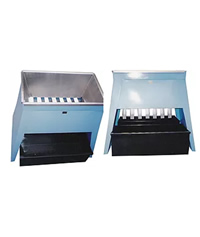
Los Angeles Abrasion Machine
ASTM C-131, C-535
This machine can be used to determine the wear resistance of aggregates such as crushed rock, slag and crushed or uncrushed gravel, in addition to obtaining the abrasion limits indicated in ASTM C-33.
Portable Sieve Shaker
ASTM C-136
The Portable Sieve Shaker performs a horizontal and vertical motion, along with a light shaking action. This combination of shaking actions ensures accurate sieving in large volume particle size testing.
Pedestal and Compaction Hammer for Stability Tests
ASTM D-1559
The pedestal and hammer are used to dynamically compact the bituminous specimen inside the compaction mold.
Centrifugal Asphalt Extractor
ASTM D-2172
The Centrifugal Asphalt Extractor is used to determine the amount of asphalt in bituminous pavement mixes, with maximum safety for the operator.
Field CBR Test Set
ASTM D-4429
Field CBR set designed for in-situ work.
Marshall Digital Stability Press
ASTM D-2172
The Marshall Stability Press is used to determine stability and deformability values of asphalt pavements. .
Sand Density Cone (6″)
ASTM D-1556
The Sand Density Cone is a practical method for determining the in-situ density of soils and materials used in gravel bases, roadways, dams, embankments and similar constructions.
Laboratory Furnace
ASTM C-566
This equipment is used to obtain the percentage of evaporable moisture in an aggregate sample by drying both the surface moisture and the moisture within the pores of the aggregate.
Auscultation with Light Dynamic Cone Point Penetrometer (DPL).
DIN 4094
Probe Soil Auscultation is an indirect process of prospecting foundation soils, which consists of introducing a probe generally perpendicularly, measuring the penetration resistance parameters.
Speedy Moisture Tester
ASTM D-4944
Determines the moisture content of a wide range of materials by reacting the sample with calcium carbide producing acetylene gas, which causes a pressure increase in the vessel.
Plastic Limit Test Kit
ASTM D-4318
It consists of a selection of the elements necessary to carry out the test and obtain the plastic limit of the soils.
Sand Equivalent Test Set
ASTM D-2419
The Sand Equivalent Test Kit is used to determine the relative portion of fine dust or deleterious clay materials contained in soils.
Shrinkage Limits Test Set.
ASTM D-427
Set of elements necessary to carry out the test according to ASTM specifications and determine the shrinkage limit of soils.
Casagrande Cup Manual Apparatus – Liquid Limit.
ASTM D-4318
Manual instrument designed to determine the liquid limit of soils.
CBR Mechanical Load Press
ASTM D-1883
Used to force piston penetration into the CBR compact specimen. The load is applied through a mechanical type jack that exerts a two-speed action.
Table Top Consolidation Apparatus
ASTM D-2435
The apparatus in conjunction with consolidation rings is used to determine the volume decrease and the rate at which this decrease occurs in a laterally confined soil specimen subjected to axial loading.
Digital Press for Concrete Core Breaking
ASTM C-39
Equipment for the determination of the compressive strength of cylindrical concrete specimens.
Direct Cutting Equipment
ASTM D-3080
In the direct shearing equipment, an attempt is made to break a sample according to a predetermined plane, in order to experimentally determine the cohesion and friction angle parameters that define the resistance of the granular soil.
Concrete Beam Breaking Presses
ASTM C-78
Apparatus used to determine the bending stress of concrete (using a simply supported beam with loads in the thirds of the span).
HIDRAÚLICA
Canal de Pendiente Variable
Medición de diversas variables que se dan en el flujo de agua en un conducto abierto.
Pérdida de Carga en Tuberías
Visualizar el flujo de agua en conductos cerrados.
Cuba de Reynolds
Visualizar el flujo laminar y turbulento mediante la inyección de un colorante al tubo de vidrio de visualización.
Mesa de Línea de Corrientes
Visualización y cuantificación del flujo laminar y líneas de corriente mediante colorantes.
- Specialty: https://youtu.be/5Xp2RqekGvI
- Library: https://youtu.be/d3y-M3REX10
- General Studies: https://youtu.be/fvlj7leiLZ4
- Coliseum: https://youtu.be/5cA1Oh4x4zk
We are here to help you, send your questions to the means below or FOLLOW US on our social networks and stay informed with the latest news and events of the faculty.
Av. La Fontana 1250 Urb. Sta. Patricia 2da Etapa. La Molina


